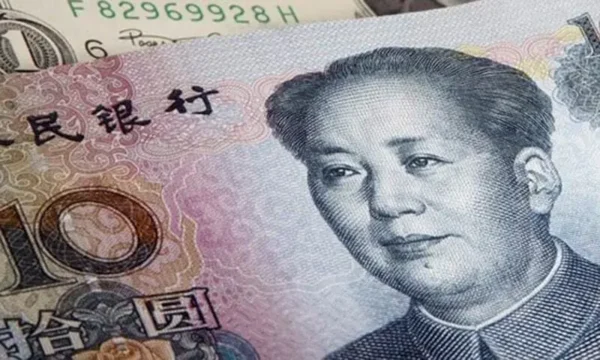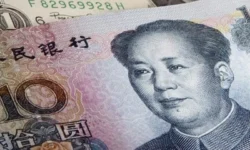Trading dollars for dragons

Publishing date: 10 November 2025
Published in: DAWN
Pakistan is set to float the “Panda Bond” by the end of 2025 in the world’s third-largest bond market to raise loans from the Chinese financial market in view of increasing reliance on Renminbi (RMB) in the future. It is an attempt to diversify its external financing sources and enhance financial relationships with China.
A Panda Bond is a bond, issued in China, by a foreign sovereign or entity, in Yuan (RMB). It would be the first time that Pakistan attempts to offer a sovereign foreign bond that specifically targets the Chinese investors. It is expected that the sums raised will be large net additions to the foreign exchange reserves over a span of three to five years.
The move is being described by policymakers as a “strategic financial innovation”, one that aims to reduce pressure on the dollar and open access to the deep pool of yuan liquidity within China’s domestic capital markets. For Pakistan, which continues to face persistent balance of payment challenges. This move may reduce dependence on US dollar-denominated borrowing and promote financial deepening with its most important trading partner, China. It is also consistent with the government’s broader objective of expanding Yuan-based settlements for bilateral trade under the China Pakistan Economic Corridor (CPEC) framework.
Panda Bonds have three distinctive features: firstly, these bonds are issued by a non-Chinese entity on the mainland of China; secondly, they are not denominated in a foreign currency but in RMB; and thirdly, they cannot be sold to an investor outside the People’s Republic of China. These bonds are listed on the Chinese Interbank Bond Market (CIBM) and usually guaranteed by international institutions like the Asian Development Bank (ADB) and Asian Infrastructure Investment Bank (AIIB).
Pakistan’s launch of Panda bonds is not just a financial transaction but a strong message that Pakistan is ready for innovation and diversification of its debt profile
Over the past few years, several emerging economies, including the Philippines, Egypt, and Hungary, have entered this market to diversify their debt portfolios and hedge against foreign exchange volatility. The first Panda Bonds were issued in 2005 by the International Finance Corporation (IFC) and the Asian Development Bank (ADB) and had a yield of approximately 3.4 per cent and 3.34pc, respectively. In 2018 the Philippines was the first Southeast Asian nation to issue a Panda Bond, where it raised RMB 1.46 billion with a 4.75pc yield.
Finance Minister Muhammad Aurangzeb said that Pakistan had re-entered commercial markets after two and a half years, securing financing from Middle Eastern banks, and is planning to issue its first Panda bond before the end of the year.
The move, announced by Mr Aurangzeb, signals a strategic shift in Islamabad’s borrowing strategy: tapping the RMB-denominated market to secure longer-term funding, diversify its investor base and reduce reliance on short-term domestic debt and US dollar borrowings.
It has been reported that Pakistan’s deal is supposed to be jointly led by arrangers and advisors from Habib Bank Limited (HBL) and China International Capital Corporation (CICC). During the first stage, the bond shall be focused on institutional investors (banks, insurance companies and pension funds) in China. After the initial issuance is successful, the offering can be made available to retail and individual investors in a gradual process that will be akin to the one discussed earlier in the year 2020.
China’s Panda Bond market is growing rapidly but remains selective. Any country wanting to issue Panda Bonds must go through a rigorous approval procedure and must first secure clearance from key Chinese regulators, including the People’s Bank of China, the National Association of Financial Market Institutional Investors and the China Securities Regulatory Commission. To gain the confidence of investors, Pakistan has to show that it will manage its debt transparency, reporting standards and macroeconomic stability.
Pakistan’s recent progress in restoring discipline under the International Monetary Fund (IMF) programme and its renewed focus on fiscal consolidation are likely to play a key role in shaping investor sentiment. The recent development in Pakistan in terms of bringing back discipline in the IMF programmes and the new emphasis of the country on fiscal consolidation will play a key role in creating investor sentiment.
However, Chinese investors, who are typically known for their long-term view of sovereign creditworthiness, will evaluate Pakistan’s structural reform agenda closely. In this context the progress on restructuring state-owned enterprises, rationalisation of energy subsidies and enhancing the tax collection will remain central to their risk assessment.
Beyond its economic rationale, the proposed Chinese bond is an extension of the Pakistani financial diplomacy with China. It complements the ongoing CPEC collaboration beyond the infrastructure and trade into the realm of financial and capital market spheres.
This move also indicates Pakistan’s growing financial integration with the Global South, particularly within the BRICS financial ecosystem. At the same time, such symbolic gestures should not divert attention from ground realities. It will expose Pakistan to yuan exchange rate risk; therefore, transparent governance, effective marketing and sound post-issuance management are critical to sustaining investor confidence. Without macroeconomic stability, the benefits of this new instrument may be short-lived.
The launch of the Panda bond is not just a financial transaction but a strong message that Pakistan is ready for innovation and diversification of its debt profile. This move could open future doors for more financing in yuan and enhance Pakistan’s standing among international investors.
However, the Panda Bond must be seen as a financial catalyst rather than a structural remedy. While it may assist in improving liquidity and risk diversification of funding sources, it cannot substitute structural reforms that are essential for economic resilience. In order to capitalise on this opportunity, Pakistan must complement financial innovation with institutional reforms and rebuild investor confidence through transparency, fiscal prudence and consistent reform implementation.
Ultimately, the success of this initiative will not be measured by the size of funds raised, but by how effectively these borrowed funds are utilised. The real test lies in whether Pakistan can convert this symbolic entry into China’s bond market into a credible step towards disciplined borrowing, a partner that can be relied upon, and an economy that is ready to confidently integrate with the rapidly growing financial markets of the world.





